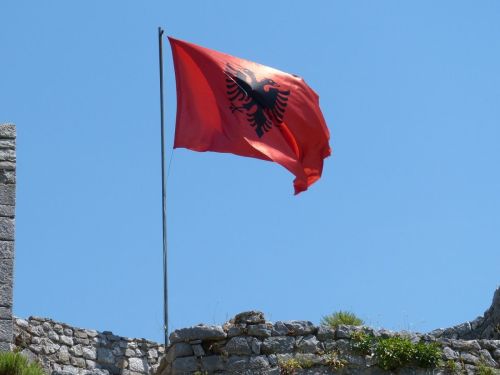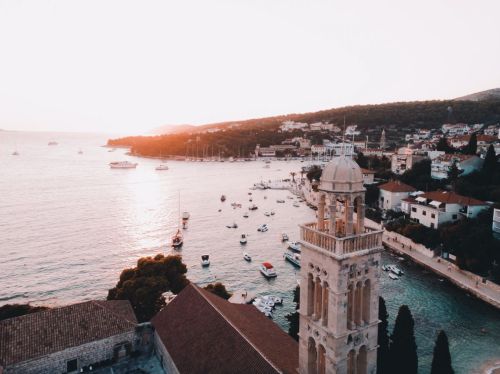Bulgaria is a small country in southeastern Europe, not much larger than Iceland or the American state of Tennessee. Its surface is very diversified topographically. There you can find plains, plateaus, hills, mountains, valleys, gorges, and deep river valleys. It is a country with a rich, interesting history hidden in many monuments, a country of good wine, tasty food, and rose oil. It was here that the Cyrillic alphabet was invented and is still used in all Eastern Slavic languages. Here, people live longer than other nations and use different ways of expressing certain gestures compared to most.
It borders Romania to the north, Serbia and Macedonia to the west, Greece and Turkey to the south, and the Black Sea to the east.
The land area is 110.550 square kilometers and the water area is 360 square kilometers.
The lowest point in the country is the Black Sea - 0 m, and the highest - is the peak of the Rila - Musala massif (2925 m above sea level), the highest peak in Bulgaria, Eastern Europe, and the entire Balkan Peninsula.
The legislative body is the unicameral, 240-person National Assembly, elected for a 4-year term.
The city lies on the Bojana River, which is a left tributary of the Iskar River (the right tributary of the Danube). Sofia is a separate urban region and is also the administrative center of the Sofia Oblast. In 2016, the city had a population of over 1 million 290 thousand people.
The largest cities, apart from Sofia, include Plovdiv, Varna, Burgas, Ruse, Stara Zagora, Pleven, Sliven, Dobrich, Shumen, and others.
The majority of the population, over 72%, lives in urban areas. The main ethnic group is Bulgarians and they constitute over 84% of the population. Ethnic minorities include Turks, Roma, Romanians, and others.
The dominant denomination is the Bulgarian Orthodox Church. More than 60% of the country's population professes Christianity. Catholicism came to Bulgaria in the Middle Ages, and Protestantism in the 19th century. According to the 2011 census, the total number of Catholics in the country was approximately 49.000, and over 64.000 were Protestants. The majority of Roman Catholic inhabitants live in Plovdiv, as well as in some villages in northern Bulgaria. There is also a large Muslim minority in Bulgaria, numbering approximately 580.000 believers, most of whom are Turks - Islam has its origins in Bulgaria in the 9th century.
Its landscape is dominated by mountainous areas, which cover 60% of the country's area. The average height above sea level is 470 m. In the north of the country there is the Danube Plain, also called the Dunavska Ravnina, the area of which to the east and south turns into highland areas: Ludogorie and Dobruja. South of the Danube Plain stretches the Northern Bulgarian Upland, which gently flows into the Balkan mountain range.
In the Central Balkans, there is the highest peak in the Balkans – Botev Peak with a height of 2376 m above sea level. The Eastern Balkans constitute the lowest part of the Bulgarian Balkans.
This lowland is surrounded by the Rhodope Mountains from the west and south. To the west of them rise the highest massifs of the Rila Mountains in Bulgaria. The country's highest peak - Musala - is located there.
In the Black Sea basin, the longest river is the Danube (length within Bulgaria - 471 km), which is a border river with Romania, along with its tributaries: Lom, Ogosta, and Iskyr. Iskyr is Bulgaria's longest river flowing entirely within its borders. The largest rivers in the Aegean Sea basin are Maritsa, Mesta, Kamchiya, and Struma (Strymónas).
There are about 260 lakes of glacial origin in the Pirin Mountains and Rila Mountains.
30% of the country's area is covered by chernozem soils, 29% by chestnut soils, and 29% by gray and brown forest soils.
Up to an altitude of 700-1000 m, there are mainly oak forests, up to an altitude of 1700-1800 m - beech and beech-fir forests, and in the highest levels of the mountains up to 2000-2300 m - spruce forests, mountain pine forests, and mountain pastures. Steppe vegetation communities occur in the Dobruja regions.
Only in Bulgaria among fish are Cobitis rhodopensis, Gobio kavatschevi, and Alburnus mandrensis. The butterfly Erebia orientalis is also unique to this country. There are also endemic beetles and spiders (Paralola buresi).
These include venomous spiders, Greek tortoises, pelicans (pink pelican and Dalmatian pelican), 16 species of snakes (including Montpellier snake, European blind snake, and dice snake), and frogs. There are over 200 species of fish living in the coastal waters of the Black Sea and rivers.
A powerful state was established with its capital in Pliska (from 895 in Preslav), which lasted in the period 681-1018. From 1018, the areas of Bulgaria were conquered by Byzantium and remained under its rule until 1185.
On March 3, 1878, after Turkey's defeat in the war with Russia, a peace treaty was signed in San Stefano, which provided for the creation of Greater Bulgaria, which would include, in addition to Bulgaria, Thrace and Macedonia without Thessaloniki. Due to this fact, March 3, the day of the end of the centuries-long Turkish occupation of Bulgarian lands, is the country's national holiday.
The first ruler of the Principality of Bulgaria was Alexander I of Battenberg. The state gained full independence in 1908, after the official annexation of Eastern Rumelia (a former autonomous state in the Balkans) as the Empire of Bulgaria, and its ruler declared himself tsar.
In World War II, it sided with the Axis powers (along with Hungary, Romania, and Finland, among others). Unlike other Axis powers, it did not take part in the aggression against the USSR in 1941.
This resulted in the overthrow of the monarchy (the last tsar of Bulgaria was Simeon II) and the establishment of a people's republic in 1946, after which the Bulgarian Communist Party took power in the country. Massive demonstrations in 1989 led to the establishment of a democratic parliamentary republic, and the first free elections were held there on October 13, 1991.
It was the first time in the history of Eastern European countries when a monarch overthrown by the communist regime became prime minister of the later republic. Simeon II was also the only monarch in the world who managed to democratically regain power in the republic.
Bulgaria is one of the poorest countries in the European Union, its economy is fragile because over 41% of the population is at risk of poverty. This country is still trying to become a member of the Schengen area. Bulgaria has been a member of NATO since 2004.
The Bulgarians created one of the most significant artistic schools of Eastern Christianity - the so-called painting of the Tarnovo Artistic School.
One of the most famous Bulgarian medieval artists is John Koukouzelis, the creator of the so-called neo-Byzantine musical notation. Today's famous Bulgarian singers, who are among the world's best, and often perform in the best opera houses across Europe, include Boris Hristov, Nikolai Giaurov, and Nikola Giuzelev.
He was the creator of many spectacular happenings, the most controversial of which was "wrapping" the Reichstag building in Berlin and the Pont Neuf in Paris in foil.
The brothers simplified and modified the 38-letter alphabet reflecting the sounds found in the Old Church Slavonic language, called the Glagolitic alphabet. It is the oldest known Slavic writing. Glagolitic was a phonetic script that was finally developed in 863. Later, it was gradually replaced by the Cyrillic alphabet (its creation is attributed to the disciples of Cyril and Methodius), which was an alphabetic script used to write the Eastern Slavic languages, most of the South Slavic languages, and others. By the 12th century, the Cyrillic alphabet spread from Bulgaria to Serbia and Kievan Rus.
Their rose oil is used, among others, in the production of the famous Chanel No.5. Bulgarian roses have been an export product of Bulgaria since the 18th century. In June, the Rose Festival takes place in Kazanlak, during which the most beautiful girls are given the title "Carica Roza". Bulgaria also produces high-quality oriental (Turkish) tobacco.
To promote tourism, the Bulgarian national movement - 100 Tourist Places of Bulgaria - was founded there in 1966. As part of this program, places of cultural and historical importance were selected, from historical sites and monuments to archaeological and architectural sanctuaries, museums, and monasteries, as well as national parks, mountain peaks, and other geological phenomena. Currently, there are 9 sites on the UNESCO World Heritage List in Bulgaria (7 cultural heritage and 2 natural heritage). There are 13 facilities on the waiting list for nomination.
In 1905, Bulgarian microbiologist Stamen Grigorov discovered the Bulgarian strain of the bacterium, which is still used in the production of yogurt all over the world. It is estimated that Bulgarian yogurts are consumed by up to 2 billion people a year. They are said to have extraordinary healing and rejuvenating properties.
According to scientists, this is due to low levels of stress, regular physical activity, and bacteria contained in Bulgarian yogurts. Bulgarians use yogurt for practically everything - as a refreshing drink with water and ice, as a milk snack, and as a condiment for many dishes.
3000 feasters took part in the feast at a table almost 400 meters long and drank 500 liters of rakija, thus achieving a Guinness record.
This country is famous for its huge number of temples (monasteries) - the largest and most famous of them is the Rila Monastery, located at the foot of the Rila Mountains massif. As one of the oldest European countries, Bulgaria can boast of an extraordinary cultural heritage. An example is the settlement of Nessebar, founded 3000 years ago, which is an architectural and archaeological reserve, and the monuments there are included on the UNESCO World Heritage List.












